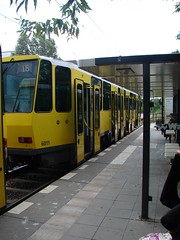 Team Lead:
Team Lead:
Team Members & Area of Study:
Pierre Filion (Toronto)
Pierre Hamel (Montreal)
Ute Lehrer (Montpellier)
Alan Mabin Johannesburg)
Solomon Benjamin (Bangalore)
Lisa Drummond (Hanoi)
Research Context, Methods & Goals:
Under Filion, the project compared present transportation realities and policies in suburban portions of metropolitan regions. Researchers concentrated on the metropolitan scale ( in particular on modes of transportation that link suburbs to the centre of the agglomeration), the suburban scale (a study of trans-suburban forms of transportation), and the local (short journeys). The study adopted a mutual learning perspective. Following the work of Cervero on Curitiba (1998), we considered what developed and developing world cities can learn from one another. There is much room to do so given the varieties in form, provision, and management. The developed world underscores the perils of automobile dependence along with varying public transit systems, while developing world suburbs demonstrate massive forms of land use-transportation coordination, and, in other sites, haphazard development and a predominance of informal forms of transportation.
The research concentrated on Toronto (Filion), Montreal (Hamel), Montpellier (Lehrer), Johannesburg (Mabin), Bangalore (Benjamin) and Hanoi (Drummond). In each case study, research focused on how suburban transportation networks are integrated within metropolitan transportation systems. Document searches and interviews with key informants (engineers, planners, present and past politicians) revealed the histories of each place, cast light on why some suburban areas are better served than others within a given metropolitan region, and why emphasis was given to certain modes at the expense of others. Descriptions of the present states of systems and performance evaluation were based on an analysis of available statistics and on interviews with community representatives, carried out both at the scale of entire suburbs and at selected locales within. Methodological approaches varied according to data availability.

